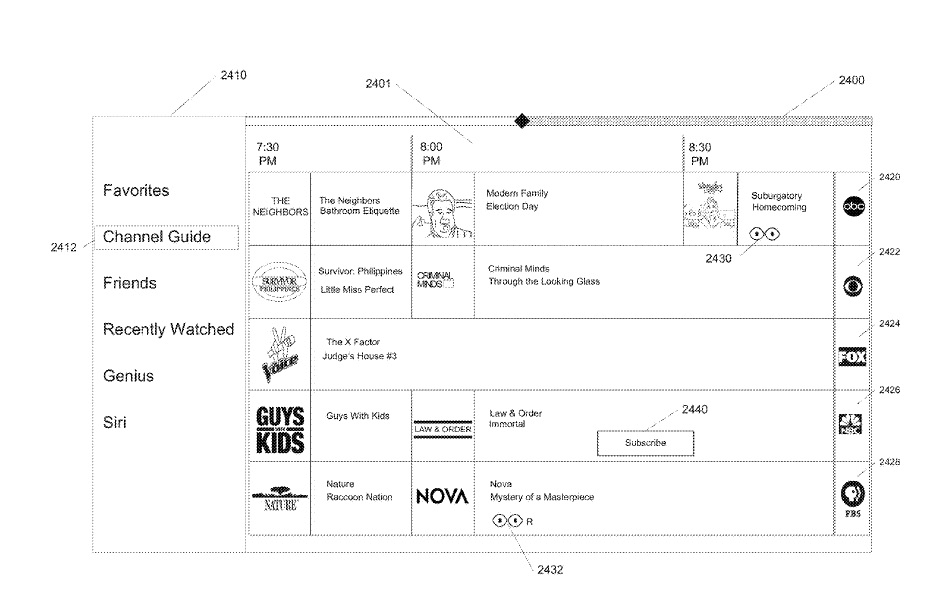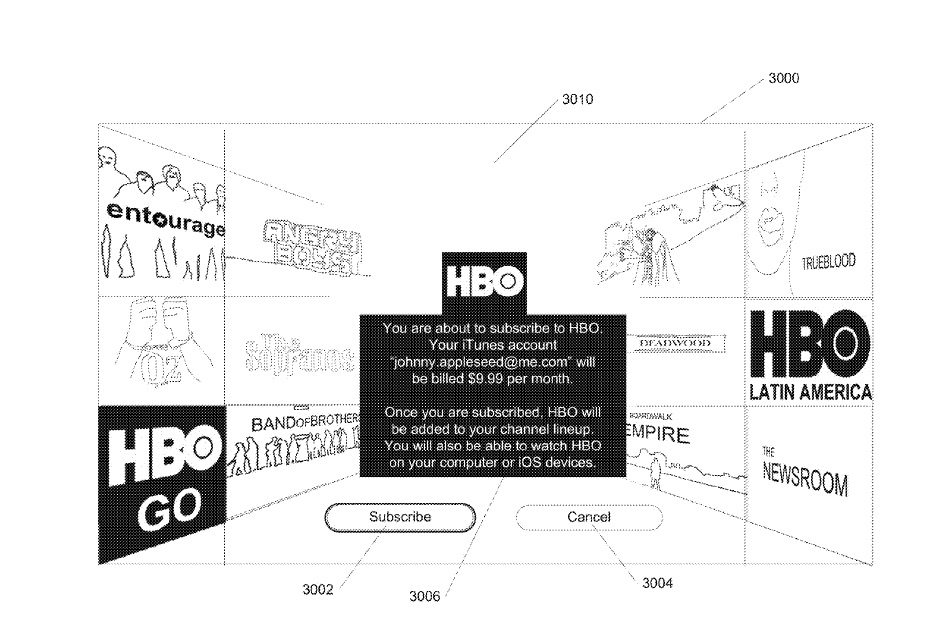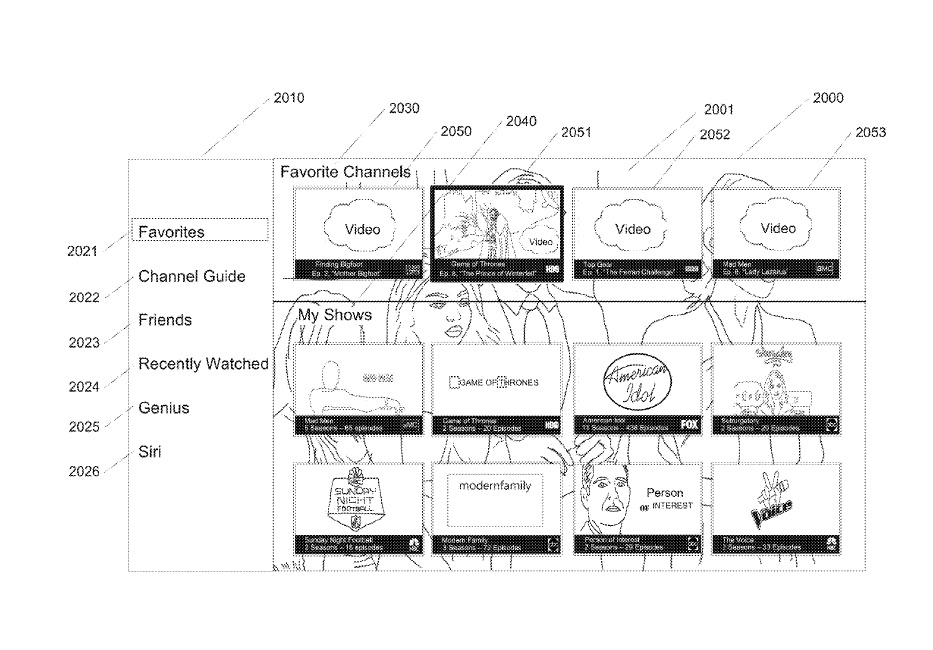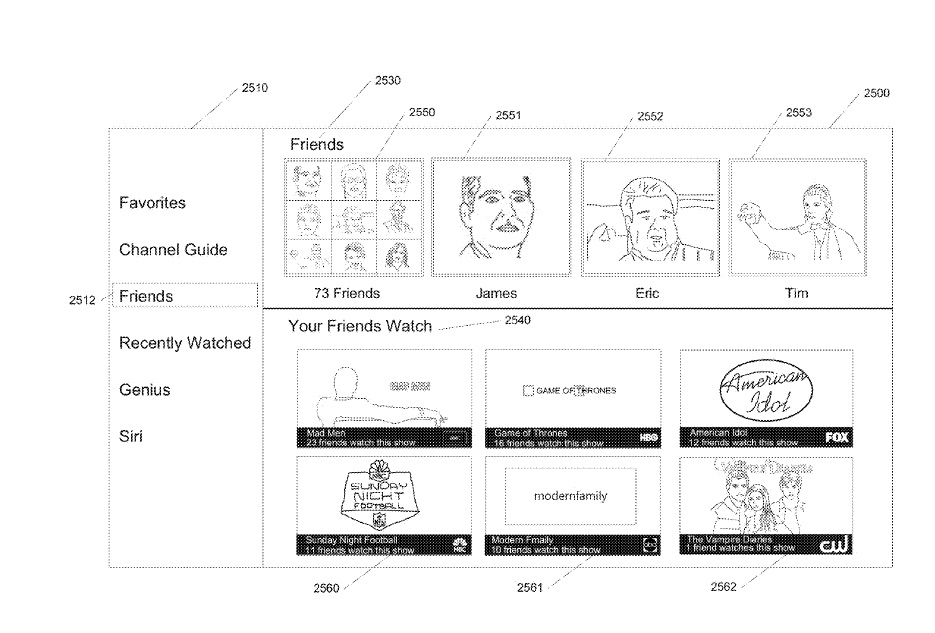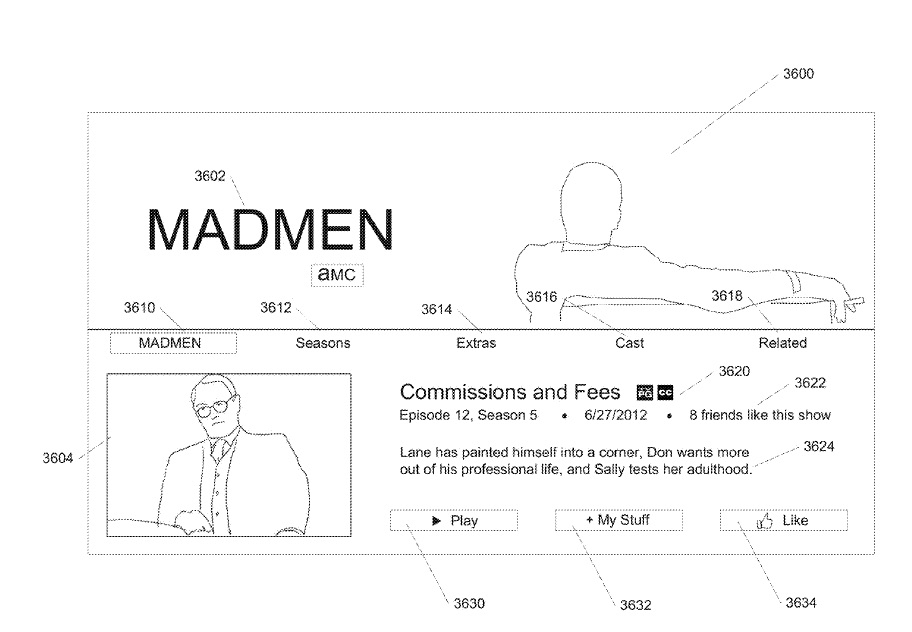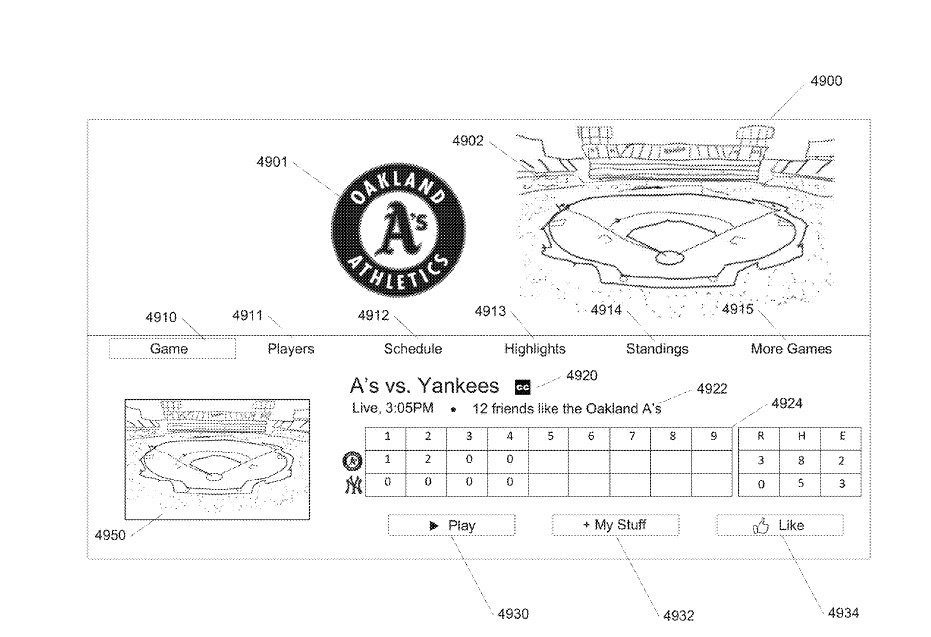We many never know exactly what Steve Jobs was referring to when he told his biographer, Walter Isaacson, that he had “finally cracked” the code on a truly great TV experience, but a recently awarded patent suggests that Apple is about to make some very big moves in this space. Titled simply, “TV sidebar user interface,” the patent offers a revealing look at the depth and breadth of Apple’s TV ambitions.
When that quote from Jobs appeared, there was widespread speculation as to what it might mean it terms of Apple’s products. Would it be an actual Apple-branded TV? Would its then-current Apple TV set-top box be rebuilt to allow an input from a cable or satellite box? Might it become CableCard-enabled and thus be its own set-top box for cable customers, much as Tivo has done with its DVRs?
Likely no. None of these options would have allowed for the simplicity and elegance Apple is known for. And at the time, few if any broadcasters had made significant moves into providing high quality over-the-top content (OTT) livestreams. In short, it was too early for Apple to make good on Jobs’ vision. But times have changed.
Now, with new live TV streaming companies emerging almost monthly, we think conditions are finally right for Apple to make its move, and this patent shows how it intends to do it. As popular as livestreaming options from PlayStation Vue, SlingTV and others are becoming, they’re mostly just a way for people to buy streaming access to their favorite broadcasters. There’s little additional value or features. In other words, it’s the same thing we used to get on cable and satellite, but delivered over the internet instead. Apple’s patent demonstrates that it’s thinking way beyond simply acting as a cable box replacement.
The patent’s text description, as is often the case with patent-ese, is as uninspiring as it gets, especially for a company known for its “revolutionary” products, and yet it yields important clues about how Apple sees its role in the growing streaming TV landscape. It includes phrases such as, “The sidebar includes multiple elements representing different categories of video content,” and, “Content which is presented may include live broadcast video for multiple channels on multiple television networks or other content providers.”
However it’s the drawings that accompany the patent that tell the real story. These show that Apple is rethinking the way it lets users access streaming content, and a “sidebar” is only the tip of the iceberg. The Channel Guide screen shows that Apple will be giving users the same timetable-based interface for live TV broadcasts as other companies with live-TV streaming packages. Cleverly, there appears to be a “subscribe” option associated with a specific show, which likely means that Apple will give users the ability to sign up for individual PPV-style shows, as well as entire channels. In another illustration, that option is clearly identified through an HBO subscription screen example.
It’s easy to get sidetracked by the more graphic aspects of the patent, such as the section on the sidebar labeled “Friends” — a reference to the social tools that will be built into the viewing experience. But some of the most fascinating aspects are contained in the schematics and their accompanying descriptions. In one of these, Apple describes a way to use someone’s smartphone as a portable authentication device, giving the owner the ability to watch all of their subscribed TV content wherever they go, including on hotel TVs or at friends’ homes. Such a system includes logic that would prevent family members who remained at home from also watching simultaneously or vice versa.
Other intriguing elements of the patent include a “watch now” option that would be accessible via the program guide. Normally you can’t watch a live TV broadcast until its scheduled time, but it looks as though Apple will automatically comb through a user’s available on-demand subscriptions, such as Netflix, Hulu, or its own iTunes, looking for matches. Why wait for a rerun of Modern Family, when you can watch it right away? The patent also describes how users could give a certain kind of content — free vs. paid, or HD vs. SD — a greater emphasis when conducting searches.
These elements barely scratch the surface of the massive 113-page patent, but it’s already enough to understand that Apple is evidently on the cusp of one-upping the cable and satellite companies’ own TV experiences in a big way.
